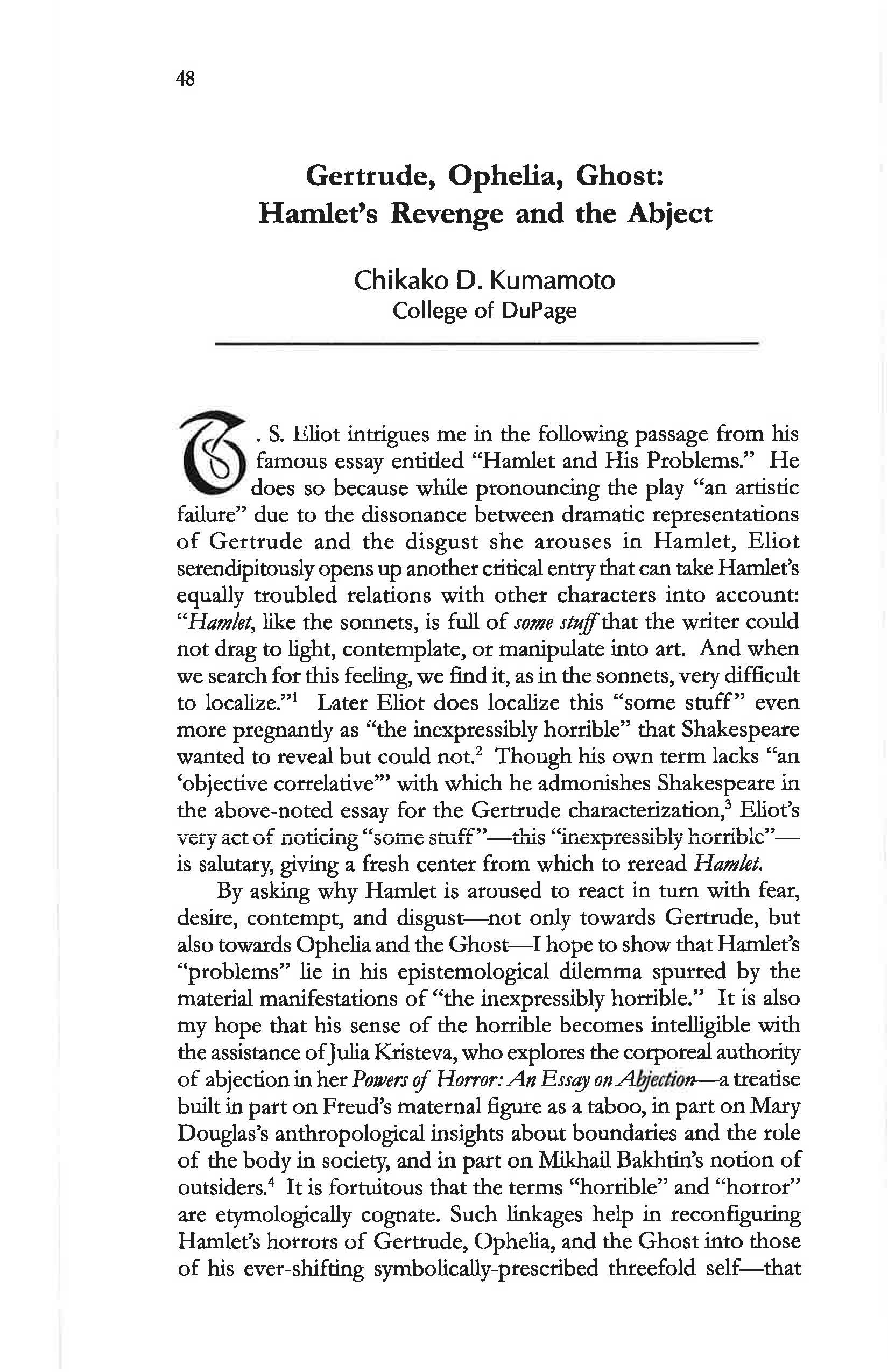Gertrude, Ophelia, Ghost: Hamlet's Revenge and the Abject
Main Article Content
Abstract
T.S. Eliot intrigues me in the following passage from his famous essay entitled “Hamlet and His Problems.” He does so because while pronouncing the play “an artistic failure” due to the dissonance between dramatic representations of Gertrude and the disgust she arouses in Hamlet, Eliot serendipitously opens up another critical entry that can take Hamlet’s equally troubled relations with other characters into account: “Hamlet, like the sonnets, is full of some stuff that the writer could not drag to light, contemplate, or manipulate into art. And when we search for this feeling, we find it, as in the sonnets, very difficult to localize.”1 Later Eliot does localize this “some stuff” even more pregnantly as “the inexpressibly horrible” that Shakespeare wanted to reveal but could not.2 Though his own term lacks “an ‘objective correlative’” with which he admonishes Shakespeare in the above-noted essay for the Gertrude characterization,3 Eliot’s very act of noticing “some stuff”—this “inexpressibly horrible”—is salutary, giving a fresh center from which to reread Hamlet.
